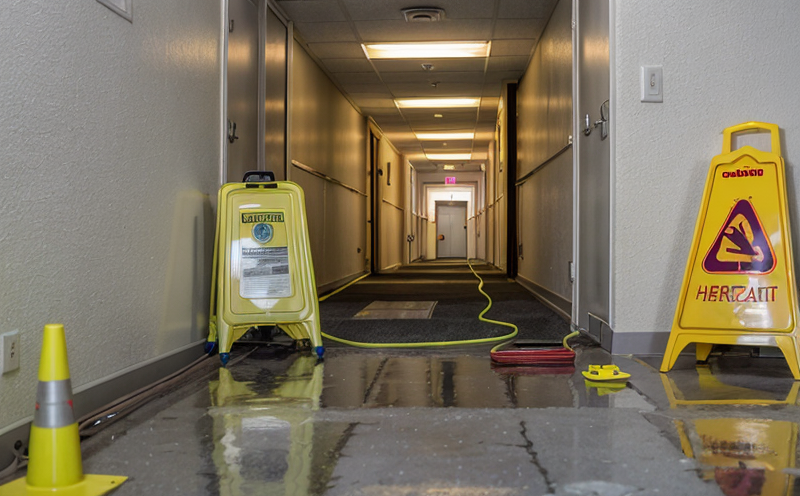NFPA 496 Purged and Pressurized Enclosure Explosion Testing
The NFPA 496 standard is a crucial guideline in ensuring that electrical equipment and enclosures used in hazardous locations comply with safety standards designed to minimize the risk of fire or explosion. This service focuses on the testing of purged and pressurized enclosures, which are critical for protecting personnel and assets in environments where flammable gases or dusts may be present.
These enclosures operate by continuously supplying an inert gas (such as nitrogen) into the enclosure at a higher pressure than the surrounding atmosphere. The excess gas is vented to prevent any accumulation of hazardous substances inside. This process helps to dilute and remove explosive mixtures, ensuring that the internal environment remains safe from ignition sources.
The testing procedure involves subjecting the enclosure to various conditions that simulate real-world scenarios, including temperature cycling, humidity exposure, and pressure changes. The goal is to verify that the enclosure can effectively maintain its integrity under these conditions while also checking for any potential leaks or breaches in the purging process.
During the test, a series of probes are inserted into the enclosure to measure internal pressure and gas composition. If an abnormal increase in internal pressure or changes in gas composition occur, it indicates that the enclosure may not be functioning correctly. Additionally, visual inspections are conducted using specialized cameras to check for any visible signs of damage.
The NFPA 496 standard also includes acceptance criteria that must be met for the enclosure to pass testing successfully. These criteria ensure that the enclosure can effectively protect against explosions and maintain its integrity under specified conditions. Compliance with these standards is essential for industries such as oil & gas, chemical processing, pharmaceuticals, and mining.
Understanding the requirements of NFPA 496 is crucial for quality managers, compliance officers, R&D engineers, and procurement teams who work in hazardous locations testing. By ensuring that enclosures meet the necessary standards, these professionals can help safeguard both personnel and equipment from potential dangers associated with working in such environments.
The rigorous nature of NFPA 496 testing underscores its importance as a benchmark for safety in industrial settings. For those responsible for selecting or specifying products used in hazardous areas, familiarity with this standard is invaluable when making informed decisions about product selection and quality assurance practices.
Benefits
Achieve regulatory compliance by ensuring that your enclosures meet the stringent requirements set forth by NFPA 496, thereby reducing the risk of accidents or incidents in hazardous locations.
Enhance product reliability and performance through thorough testing which helps identify any potential weaknesses or issues early on.
Reduce liability risks associated with non-compliance or failures that could lead to costly fines, legal actions, or even personal injury claims.
Improve brand reputation by demonstrating a commitment to safety and quality standards within the industry.
Environmental and Sustainability Contributions
By preventing explosions, these enclosures help avoid environmental damage caused by potential fires or leaks of hazardous materials.
The use of inert gases in purged and pressurized enclosures minimizes the release of greenhouse gases into the atmosphere compared to traditional methods that rely on combustion processes.
These contributions align with broader sustainability goals by promoting safer, more efficient operations while reducing overall environmental impact. Encouraging adherence to such standards can contribute positively towards achieving global targets related to safety and sustainability in various sectors.
Use Cases and Application Examples
| Industry Sector | Application Example |
|---|---|
| Oil & Gas | Testing enclosures used for storage of volatile liquids in offshore platforms. |
| Chemical Processing | Ensuring safety during the production and handling of reactive chemicals. |
| Petrochemicals | Verifying integrity of containment systems for hazardous materials transport. |
| Mining | Guaranteeing safe operation in underground mines where methane or other gases pose risks. |
These examples illustrate how NFPA 496 testing plays a vital role across multiple industries. By adhering to these standards, companies can ensure they are meeting regulatory requirements and protecting workers from potential hazards associated with their operations in hazardous locations.





